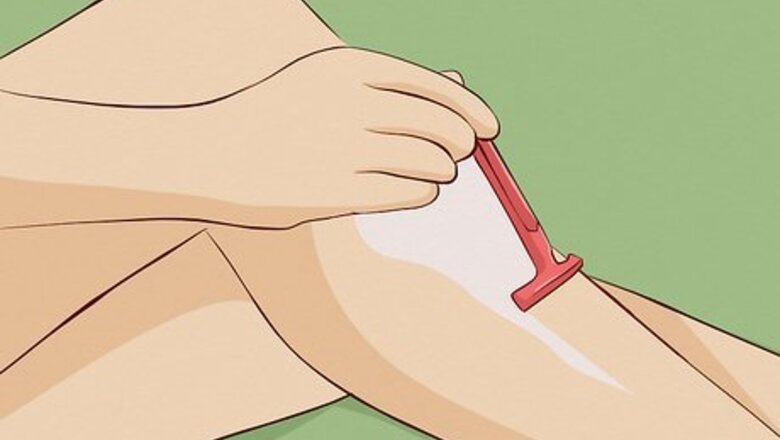
views
Slipping Them On with Ease
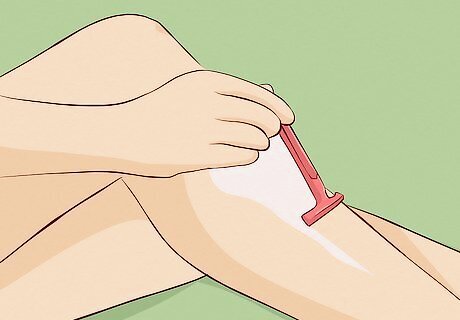
Prepare your hands, feet and legs. To keep from snagging a hangnail or patch of rough skin on your pantyhose, prepare your hands, feet and legs to make the process easier. Here are a few things you might do to get ready: File your fingernails and toenails. Shave or wax your legs (especially if your hose are sheer). Moisturize your hands, legs and feet. Take off any rings and bracelets that may catch on the nylon material and damage the pantyhose.
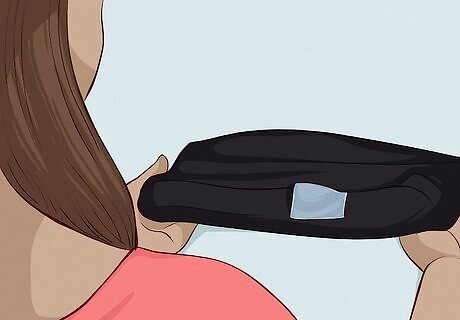
Position the pantyhose front-forward. Check for the tag and position the pantyhose so that you'll be putting them on with the tag in the back. They're constructed to be put on a certain way, and putting them on backwards could make them look and feel strange.
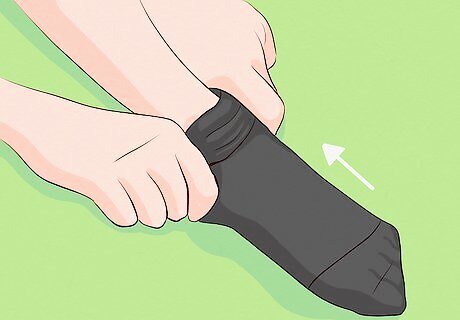
Gather one leg of the pantyhose to the toe. Starting on either the right side or left, hold the waist of the pantyhose and gently bunch the leg so that the inside of the toe is exposed. The point is to create an easy pathway for your foot, so that you can place it inside the length of the hose leg without tearing the fabric.
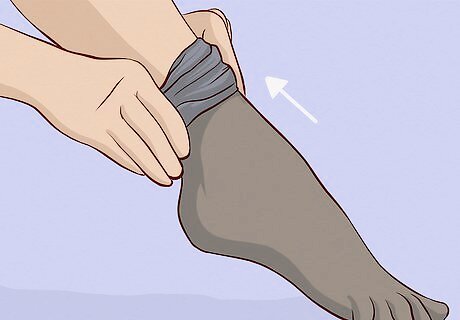
Point your toe and slip your foot inside. You might need to stretch the opening a bit to make sure your foot can fit inside without catching on the fabric. Pointing your toe will help prevent your toenail from snagging the hose. Put your whole foot inside and arrange the bottom of the hose leg so that the seam at the toe runs across the tip of your toes. Make sure the leg isn't twisted when you put your foot inside. If it's twisted, it will be difficult to pull the pantyhose up your leg. You can be in either a sitting or standing position when you put on your pantyhose. If you find it difficult to balance on one foot, you might want to sit!

Gently pull smooth the fabric up to your thigh. Ease it on carefully and slowly, making sure the fabric doesn't pull or rip. Keep the hose leg centered and pull it up until you reach your thigh. If the fabric is twisted or bunched at the knees, straighten it before proceeding.
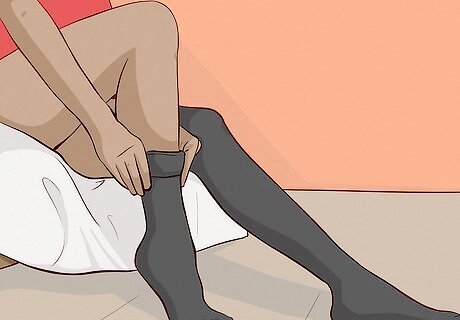
Repeat with the other side. Gather the waist and the toe of the other leg so that you create an easy path for your foot to fit through. Point your toe and insert it, then line up the toe of the hose so that the seam runs across your toes. Pull the hose leg up over your calf and knee until it reaches your thighs. Make sure it's not bunched or twisted.
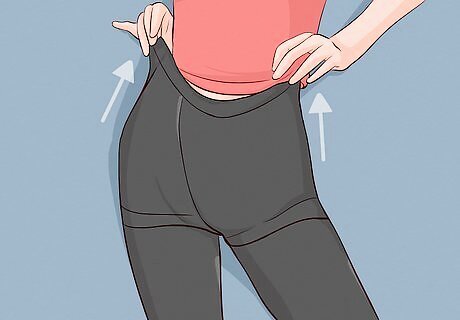
Finish pulling the pantyhose up. You should have enough fabric left to easily finish pulling your pantyhose up around your waist. If you've been sitting, stand up and pull up the pantyhose so that the elastic at the top sits around your waist. As you finish pulling the pantyhose up, you may need to alternate legs to ensure that the fabric is evenly distributed and doesn't twist.
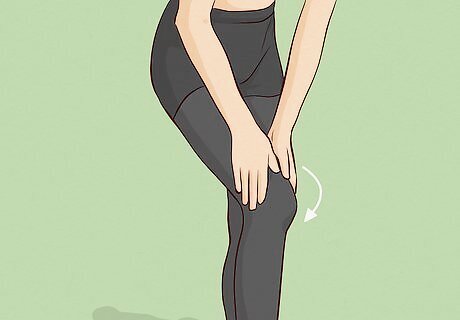
Take a look and make necessary adjustments. Check for areas where the pantyhose are bunched, or places where your skin feels pinched. The pantyhose should feel snug, but not uncomfortable. If you see a place where they're twisted, it's worth it to take them off and repeat the process more carefully - especially if you'll be wearing them all day long! If you're wearing patterned or seamed hose, try putting on a pair of rubber gloves to make small adjustments for a flawless finish, rather than pinching the hose with your fingers and risking a tear.
Wearing Them in Comfort and Style
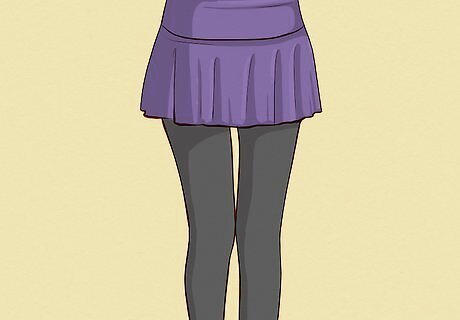
Wear pantyhose with comfortable clothes. Wearing tight clothes over a pair of pantyhose can make for an uncomfortable day. If possible, wear clothes that are easy to slip off when you need to use the restroom, and that won't make you feel too pinched and confined. If your outfit is form-fitting, you might want to consider these other options: Knee-highs or thigh-highs which look like pantyhose, but don't have the constraining panty top. Tights, which are similar to pantyhose but can be found in different fabrics that let your skin breathe more freely.
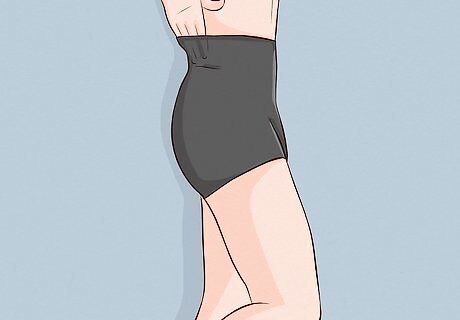
Pay attention to the weather. Pantyhose aren't very practical in extremely humid and hot weather, because they trap moisture against your skin and become uncomfortable when you sweat. If you want to wear pantyhose in warm weather, choose ultra-sheer, non-control top hose - they'll give you the most airflow throughout the day.

Learn how to stop a run from getting longer. It's inevitable - you're going to get a snag now and then, no matter how careful you are. If you see the beginning of a run, trim off the pulled thread and dab a bit of clear nail polish over the spot. This should keep it from running all the way down your leg. If your run turns into a hole, you can repair it so you can wear it again. However, small imperfections tend to show up in pantyhose, since they're made of such fine material. If you're prone to getting runs, try buying opaque hose, going bare-legged, or stocking up on several pairs so you have an extra one handy just in case.
Choosing the Right Fit
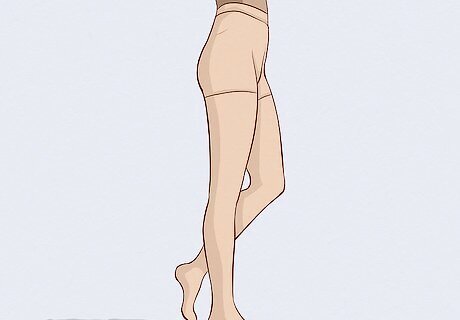
Decide how you want the top to fit. All pantyhose are constructed so that the top part fits like a panty, which serves the dual purpose of keeping the pantyhose from falling down and hugging your shape to create a slimmer silhouette. The amount of "control" in the top part of the pantyhose varies from high control to none. Choose the type of top that caters to your personal preferences, giving you both the look and comfort level you want. Control-top pantyhose have built-in underwear that fits tightly around the midsection. If you're interested in smoothing out your curves, this might be the right option for you. However, many people find that control-top pantyhose feel uncomfortably tight, and sometimes dig in at the waist to create a cinched appearance. Regular, standard panty-hose have a simpler construction and aren't meant to provide extra support around your midsection. If you don't want to change the look of your shape, opt for these instead of the control top pantyhose.
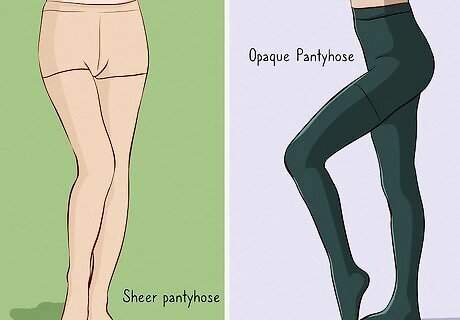
Decide what level of sheerness you want. Pantyhose range from very (or "ultra) sheer to opaque, and the different levels of sheerness result in quite different final looks. If you pick very sheer pantyhose that match your skin tone, it might not look like you're wearing pantyhose at all. Opaque pantyhose have a much more noticeable appearance. Sheer pantyhose are a bit flimsier than thicker opaque pantyhose - something to keep in mind if you're concerned about durability. Opaque pantyhose are a little warmer than sheer pantyhose, so they're better suited to winter wear.
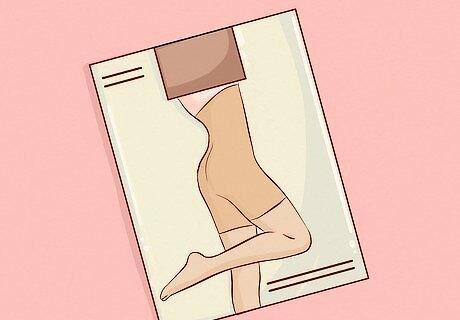
Pick the right size. Pantyhose are usually sized according to weight and height, since they need to stretch from a person's toes to the waist. Check the packaging that comes with the pantyhose and determine what size matches your weight and height range. If you hate the feeling of wearing too-tight pantyhose, size up! The pantyhose will likely still be tight enough to stay around your waist instead of falling down.
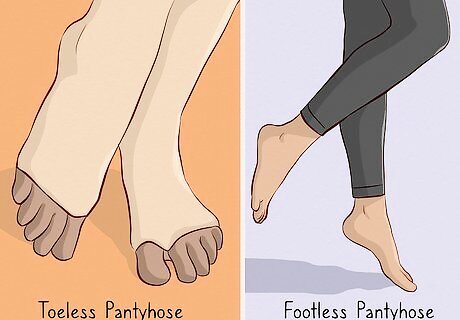
Consider comfort-enhancing options. Some pantyhose come with extra that are intended to make them feel more comfortable. If you've had trouble finding a pair that feels comfortable in the past, consider experimenting with different features to see if they make a difference. For example, you might try the following: Pantyhose with a rubbery band around the waist. You might see these labeled as "no-slip" pantyhose. Toeless, footless or crotchless pantyhose, depending on which areas tend to feel most constrained when you wear them.
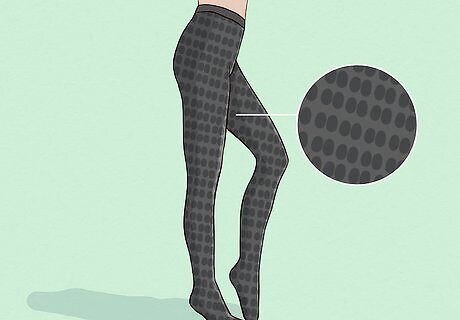
Pick out pantyhose with extra flair. Patterned or seamed pantyhose can be quite pretty. For example, pantyhose with seams up the back of the legs might lend your outfit an interesting vintage look. They're a bit more difficult to put on, since it's necessary to make sure the pattern is straight on both legs, but if you use the right technique they'll look fantastic.




















Comments
0 comment